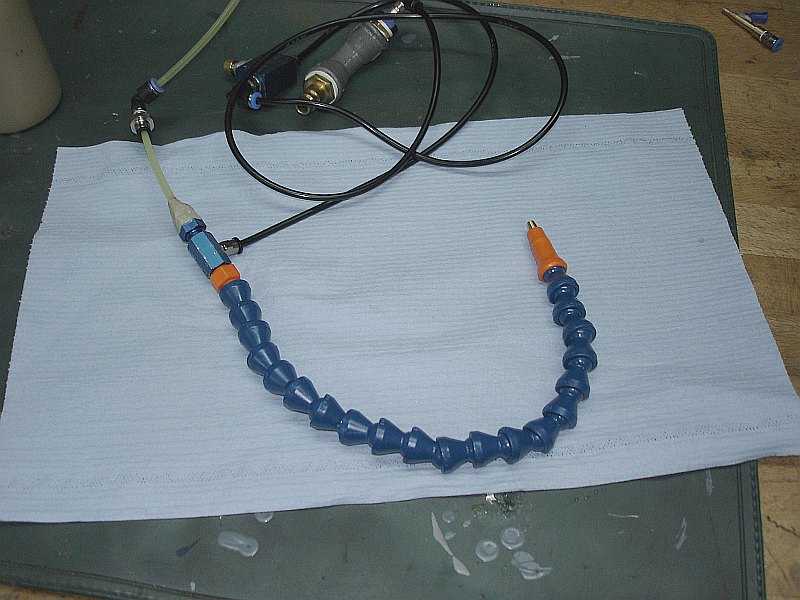
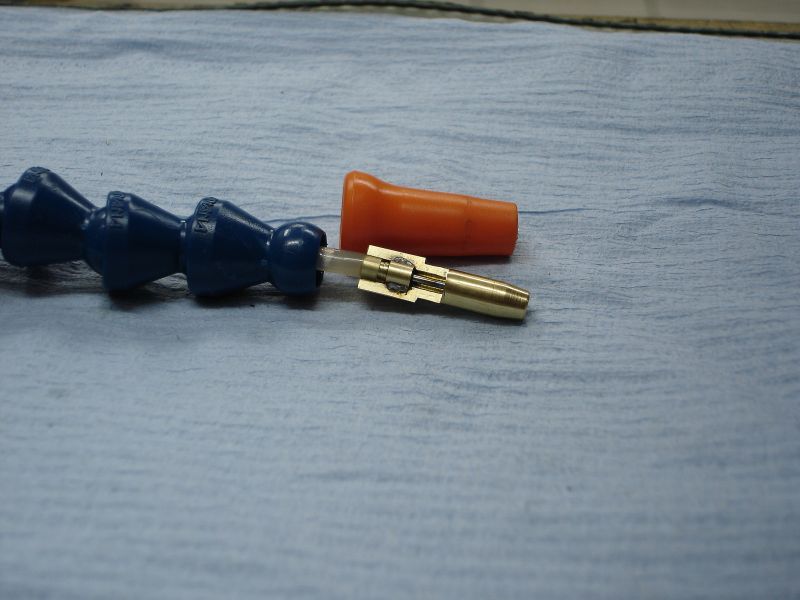
None of my machines is realy setup for flood coolant - Thats the reason why I do a lot of machining dry, with carbide tooling. That works quite well on steel and brass, on aluminum it can cause problems.
Most times I just use cutting oil or water soluable oil out of a bottle or applied with a brush and thats works most of the time fine. But sometimes you need both hand to operate the machine, or you are running a machine on autofeed for a long cut and want to do something else in the meantime.
And thats a good use for a mist- or spray coolant system. Those systems take a liquid coolant and carry it with compressed air to the cutting edge of the tool.
The result is a reduction of built up edges, longer tool life, higher possible surface speeds, sometimes better surface finish and very little mess to clean up. Also the airblast can help to clear chips, which improves cutter live too and also helps for a better surface finish.
The goal with those systems is to deliver air and coolant to the tool, but not atomize the coolant and make it airborn, which fogs up a room pretty fast. Thats not only annoying, its also a health issue, depending on the coolant used. Better spray systems don't atomize the coolant, they form small drops of coolant which don't stay airborn.
There are basicaly two principles of operation for those systems:
I tried to build quite a few spray coolant systems and also used some commercially available ones - In my own shop and also at work.
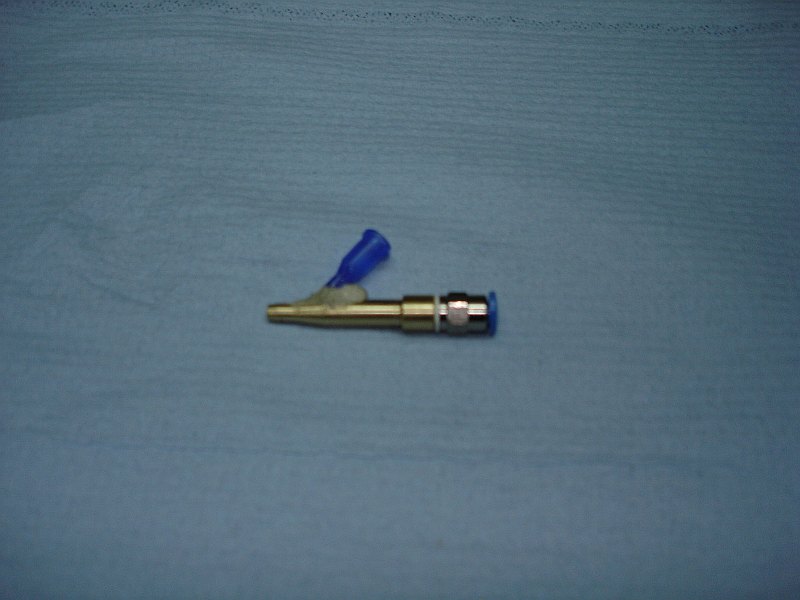
Second iteration, already more refined, I built a spray mister into the tip of a LocLine pipe:


Air goes trough the Locline and the liquid goes trough a 4mm pneumatic hose that runs trough the LocLine.
This is the cross section of the spray tip, the small pipe that goes to the front of the brass tip is a dispenser needle for solder paste with 0,6mm internal diameter.
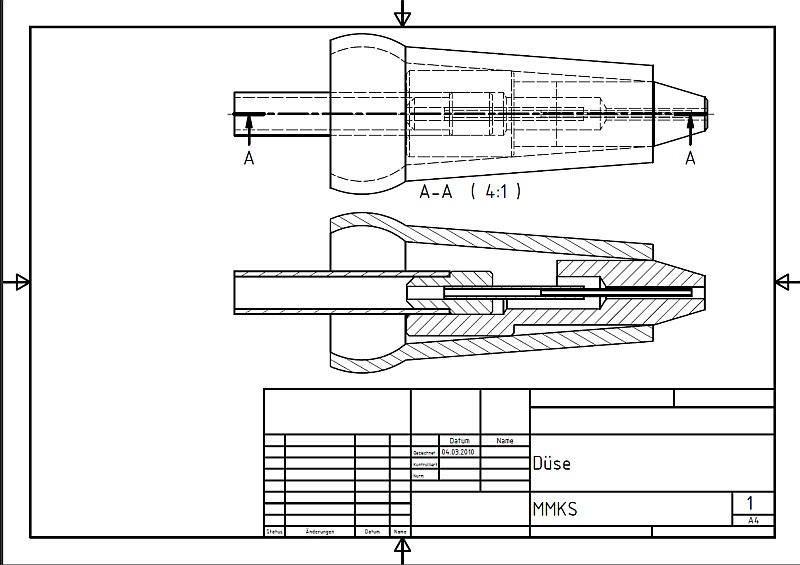
The aluminum part is a manifold to get air and liquid seperatelly into the Locline:

It worked "ok", but far from reliable, so I did not use it very much.
Then I tried my hand at building a system with a pressurized coolant tank - It looks a bit like a pipe bomb ;)
The spray head was inspired by the patent drawings for the FogBuster, but it did not work very good. A lot of fogging and I could just not dial it in right, so this one was also discarded.
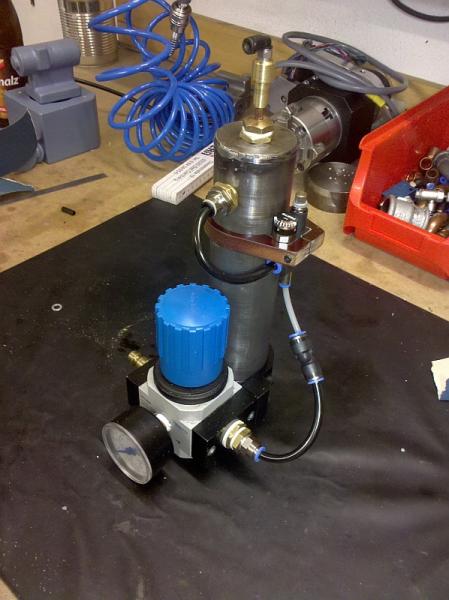
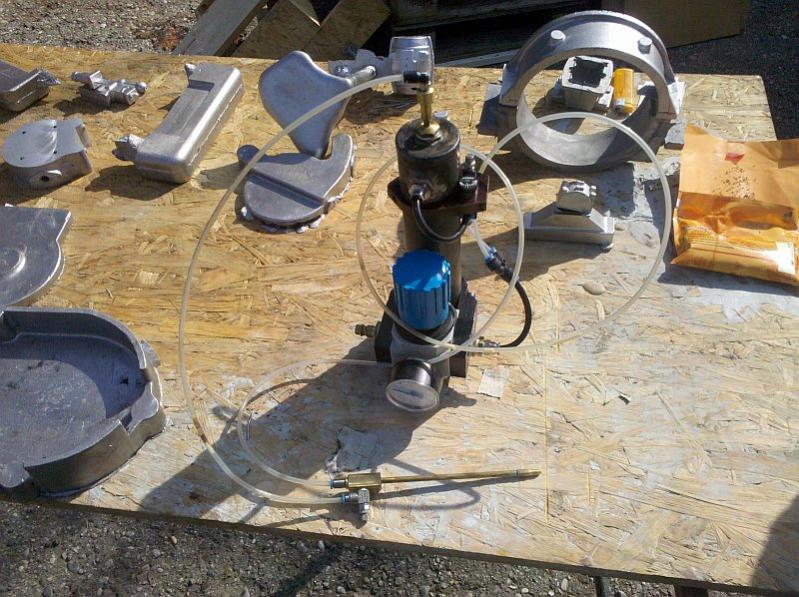
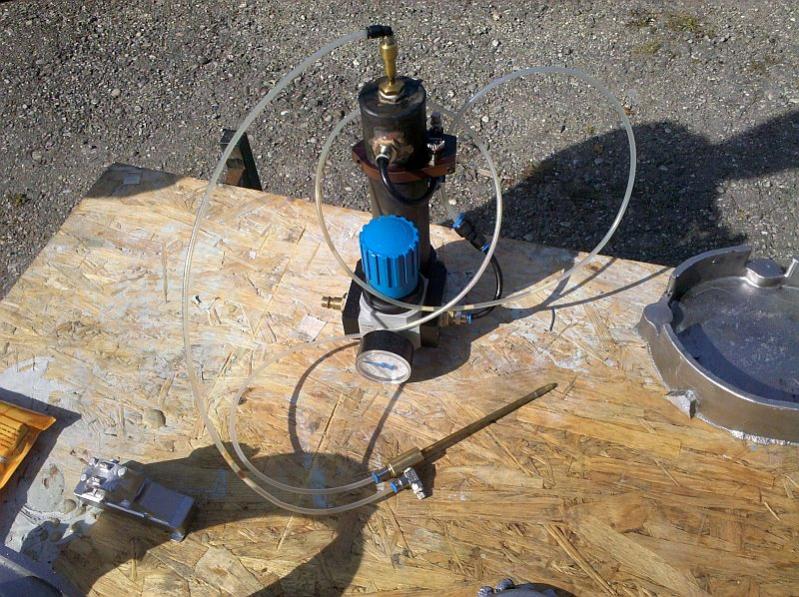
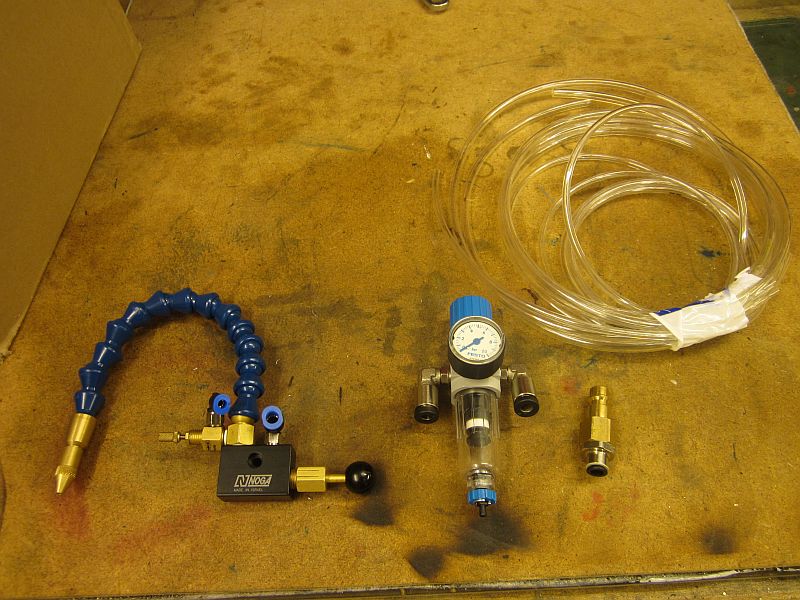
Here I have the Noga Minicool in use on the lathe:
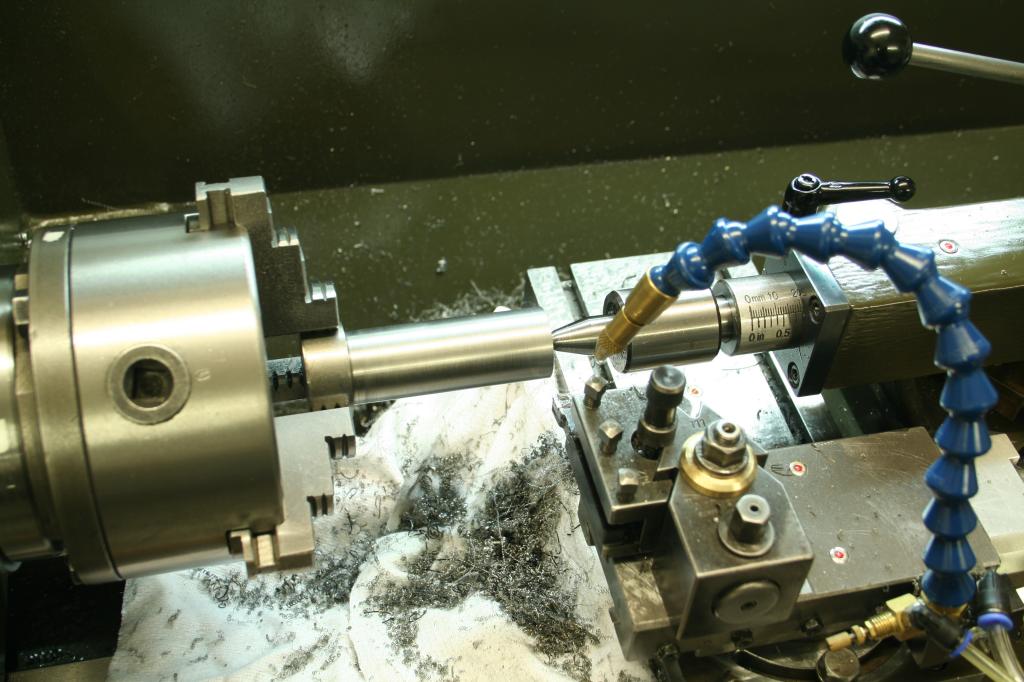
When it worked, it was OK, but as it was always a struggle to get it setup for a good spray pattern thats not fogging up the shop, I sold it in the end.
My latest try on using a spray cooling system: The FogBuster.
According to the advertisement it does not produce any fog and can deliver a very fine and consistent spray of coolant.
I ordered it in Kit form from Sorotec in Germany, it comes with a smaller tank than stock and you have to assemble it yourself. I like the smaller tank as it does not take up as much space, and I don't plan to use it all the time.
I built a small stand for the tank and the pressure regulator out of plywood and mounted the sprayer head on a magnetic stand. To keep the two hoses (air and liquid) under controll, I wrapped them together with spiral tubing thats normaly used for wire harnesses. Thats better than the two seperate hoses, I would prefer a double hose, but I could not source one so far.

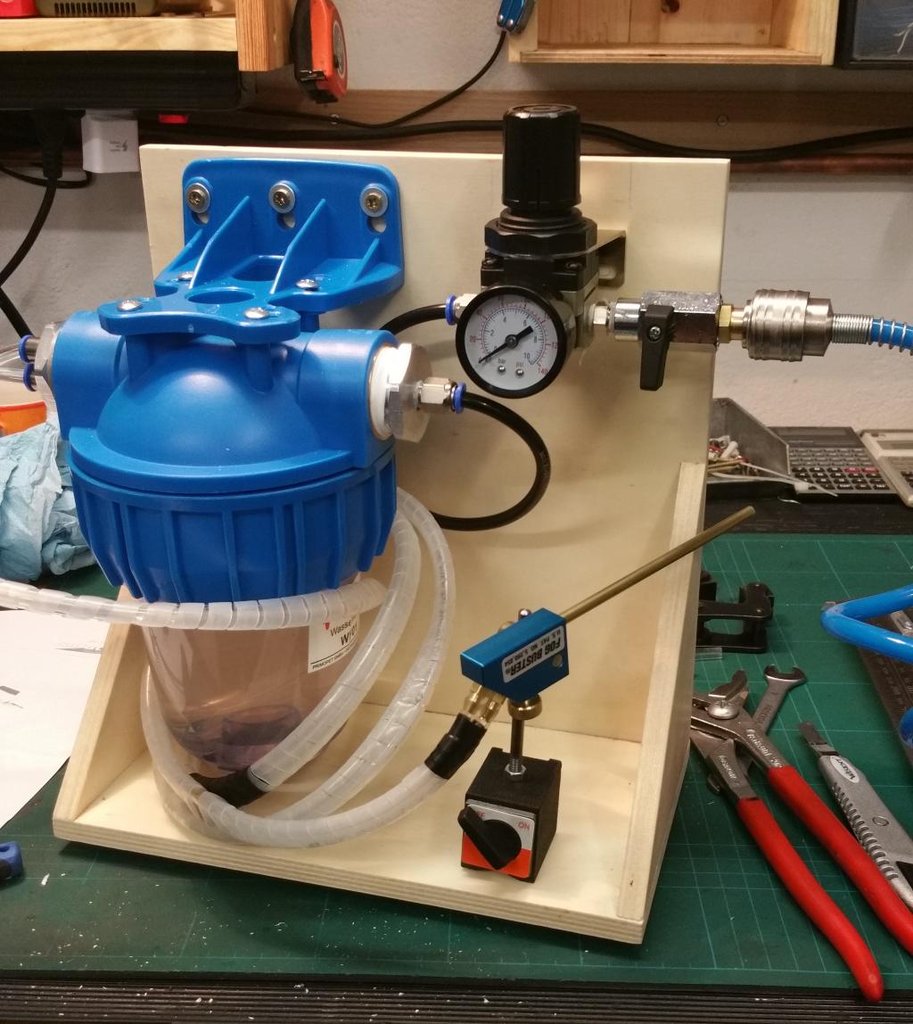
Recently I had to do a lot of roughing on the lathe and I gave the FogBuster a try, aiming it directly at the insert.
I could hear that the strain on the motor went down and that the the chips only went to straw color instead of blue. While it did not fog up the shop directly, the small amount of coolant evaporated on the hot insert/workpiece, producing a lot of steam that got in the air...
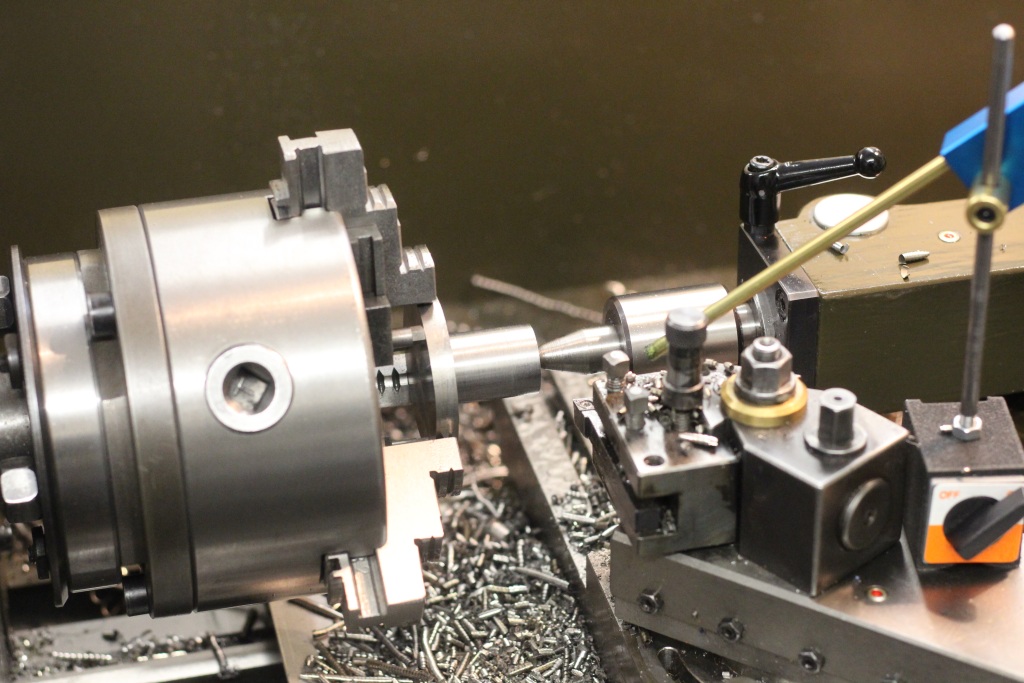
I still think that flood coolant is superiour, but for me thats no option because of the mess it makes. Dry machining is often a good option, but sometimes you just need that little extra of cooling/lubrication, and thats the time when a spray coolant system might be a good idea.